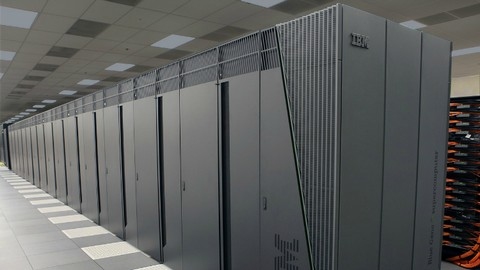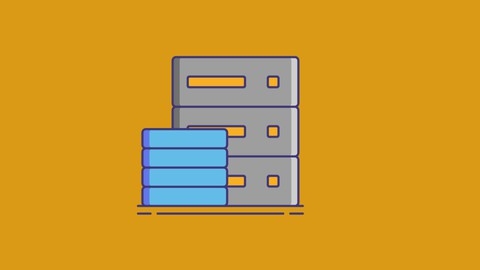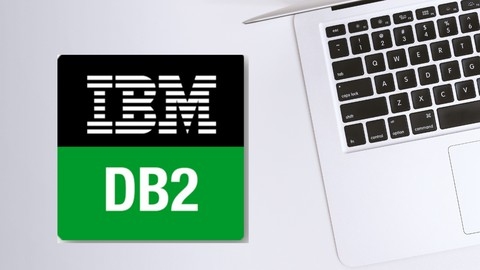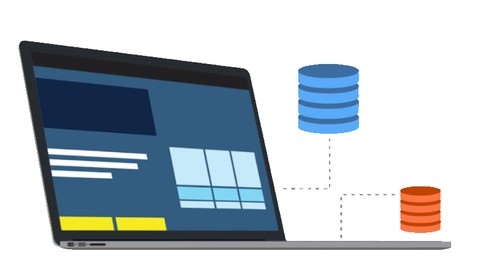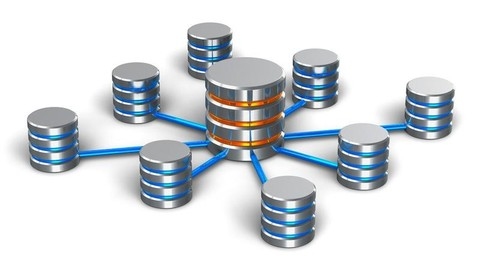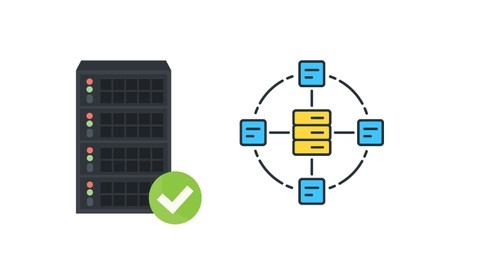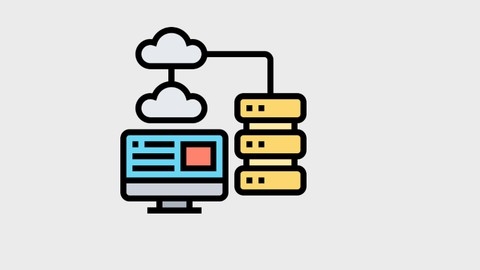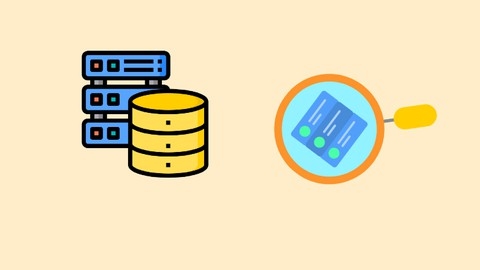IBM DB2 is a powerful and widely-used relational database management system (RDBMS) that finds extensive use in enterprise applications.
Learning DB2 can open doors to a variety of lucrative careers in database administration, application development, and data analytics.
Finding a solid DB2 course on Udemy can be challenging, as many courses focus on specific aspects of DB2 without providing a comprehensive understanding.
You’re looking for a course that delivers a strong foundation in core DB2 concepts, combined with hands-on practice to build your skills.
We’ve done the research for you, and we strongly recommend Mainframe: Code DB2 on COBOL Programs for Absolute Beginners as the best overall DB2 course on Udemy.
This course stands out for its focus on practical programming, guiding you through building real-world COBOL DB2 programs, essential for many mainframe applications.
This is just one excellent option for learning DB2.
Keep reading to explore other recommended courses catering to different learning styles and goals, including beginner-friendly introductions, advanced courses on specific DB2 features, and courses tailored for specific industries or roles.
Mainframe: Code DB2 on COBOL Programs for Absolute Beginners
You’ll start with an introduction to DB2 and its hierarchy, covering important concepts like data types, SQL operations, and DDL operations like creating tables, views, altering tables, and dropping tables.
From there, you’ll dive into DML operations - inserting, selecting, updating, and deleting records from tables.
The course dedicates multiple lessons to different aspects of the SELECT statement, ensuring you master this crucial operation.
You’ll learn about keys and indexes, including unique keys, unique indexes, and primary keys.
The course also covers important database concepts like NULL, NOT NULL, DEFAULT values, and referential integrity, with coding examples to reinforce your understanding.
The real highlight is learning to code COBOL DB2 programs.
You’ll go through the steps of creating these programs, understanding JCL for precompiling, compiling, and link editing.
The course explains the bind process and the structure of COBOL DB2 programs in detail.
You’ll then code several COBOL DB2 programs for performing various DML operations.
There’s even a project to apply your learnings in a practical scenario.
The course doesn’t stop there - it covers handling unknown missing values in DB2 through indicators and processing multiple records from tables using COBOL DB2 programs.
You’ll also learn how to update the current record after fetching records.
DB2 For Beginners
The course starts by introducing you to the fundamentals of DB2 and SQL, ensuring you have a solid understanding of database concepts and schemas.
You’ll learn how to set up the DB2 Database Server and perform essential CRUD (Create, Read, Update, Delete) operations for data manipulation.
The course covers multiple table relationships and guides you through creating a new database and table using SQL scripts.
One of the key aspects is the hands-on experience you’ll gain by installing and launching the IBM Data Studio Client.
You’ll create multiple tables, insert records manually and through SQL script files, and learn how to execute SELECT statements for retrieving data.
The course doesn’t just stop at basic operations; it also teaches you how to update and delete records, exclude duplicates, sort data, and filter records using the LIMIT clause and LIKE operator.
You’ll dive into aggregate functions, which are crucial for data analysis, and learn how to truncate and drop tables when needed.
Throughout the course, you’ll work with essential concepts like ERD (Entity Relationship Diagrams) and CRUD, ensuring you understand the fundamentals of database design and operations.
Mainframe DB2 Developer Training By Anil Polsani
The course covers both theory and practical aspects, giving you a comprehensive understanding of working with DB2 on the mainframe.
You’ll start with an introduction to Mainframe DB2, learning about tables and constraints.
From there, you’ll dive into coding COBOL-DB2 programs, including the pre-compilation and bind process.
This hands-on approach ensures you gain practical experience right from the start.
The course walks you through creating tables and writing programs for various operations like inserts, selects with cursor concepts, updates with cursors, and even handling update restart logic.
You’ll also learn about the load and unload processes, as well as how to handle SQLCODE error codes.
One of the key focuses is on writing COBOL-DB2 programs for different scenarios, such as updating data using a main program and subprogram, and working with cursor programs.
This will give you a solid foundation in developing robust DB2 applications on the mainframe.
Throughout the course, you’ll work with essential concepts like tables, constraints, cursors, and SQL queries.
Mainframe - COBOL DB2 - Basic to Advance Level
This course starts with an introduction to DB2 and its object hierarchy.
You’ll learn about the different roles of developers and DBAs, as well as data types and SQL fundamentals.
One of the key aspects of the course is its focus on practical, hands-on learning.
You’ll get to use tools like QMF and SPUFI to create, alter, and drop tables, as well as work with referential integrity and delete rules.
The course dives deep into DML statements like INSERT, UPDATE, DELETE, and SELECT, including the use of views.
For those interested in application programming, the course covers COBOL-DB2 integration in detail.
You’ll learn how to call DB2 in different ways, work with host variables, and understand the DCLGEN process.
The course walks you through writing SQL queries in COBOL programs, compiling and running them, and handling SQLCA (SQL Communication Area).
The syllabus also covers advanced topics like cursors, their life cycle, and cursor programming.
You’ll gain practical experience with SQL queries, including aggregate functions, logical operators, computations, and group by clauses.
The course explores various types of joins, subqueries (nested and correlated), and set operations like UNION and UNION ALL.
One of the standout features is the comprehensive coverage of referential integrity, primary keys, foreign keys, and on delete rules.
You’ll learn how to work with these concepts through practical examples and exercises.
Towards the end, the course delves into more advanced topics like COBOL DB2 compilation, precompiling, binding, and plan creation.
You’ll understand the different bind parameters and their implications.
Throughout the course, you’ll work with real-world examples and scenarios, ensuring that you gain practical experience in addition to theoretical knowledge.
Python and DB2 App Development: Build a CRUD Application
The course starts by guiding you through setting up Python on different operating systems like Windows, Macs, and Linux.
You’ll also learn how to install a text editor, which is essential for writing code.
Next, the course introduces you to IBM DB2, a powerful database management system.
You’ll download and install DB2, and learn basic database concepts like creating a database and table.
Additionally, you’ll install the IBM Data Studio Client, a tool for interacting with DB2 databases.
The main focus of the course is building a CRUD (Create, Read, Update, Delete) application using Python and DB2.
You’ll learn what CRUD is and design the application’s interface.
Step-by-step, you’ll create a directory, Python file, and build the app’s user interface.
To connect Python with DB2, you’ll create a database configuration file and set up a virtual environment.
Then, you’ll install the ibm_db database driver, which allows Python to interact with DB2.
The course will guide you in creating a class with methods to perform CRUD operations on the database.
You’ll also learn how to activate button widgets in the app’s interface, allowing users to execute CRUD operations.
Finally, you’ll test the application to ensure everything works as expected.
The course provides the complete project code, so you can refer to it or modify it as needed.
IBM: DB2 11 Fundamentals for z/OS. Practice Exam (NEW)
You’ll start by exploring PART1, where you’ll gain insights into the core concepts and functionalities.
This lays a solid foundation for the subsequent sections.
As you progress, you’ll delve into PART2, which covers more advanced topics and techniques.
This part equips you with the skills to effectively manage and optimize DB2 databases on the z/OS platform.
You’ll learn how to leverage the powerful features of DB2 11 to enhance performance and ensure data integrity.
Finally, the course culminates with PART3, where you’ll dive into real-world scenarios and practical applications.
This hands-on experience allows you to apply the knowledge you’ve acquired throughout the course, solidifying your understanding and preparing you for real-world challenges.
Throughout the course, you’ll benefit from a well-structured curriculum that combines theoretical concepts with practical exercises.
The course material is presented in a clear and concise manner, making it accessible to learners of all levels.
The Mainframe Development Course : DB2
The course starts by introducing you to DB2 basics like instances and databases.
You’ll then dive into the core components - buffer pools, tablespaces, storage groups, and schemas.
Next, you’ll learn about data types, tables, aliases, and constraints that govern your database objects.
The course also covers indexes, triggers, sequences, views, and working with XML data.
You’ll gain insights into backup and recovery processes as well as database security and roles.
A key highlight is the dedicated modules on COBOL-CICS-DB2 programming, where you’ll get hands-on experience writing applications that interact with DB2 databases.
DB2 SQL For Beginners
This course will teach you the fundamentals of working with IBM’s DB2 database management system and SQL.
You’ll start by learning what DB2 and SQL are, and how to install DB2 on your machine.
Then, you’ll create your first database and table, getting hands-on experience with the core concepts.
Next, you’ll install IBM Data Studio, a powerful integrated development environment for DB2.
You’ll learn how to launch and use Data Studio to interact with your DB2 database server.
From there, the course dives into SQL operations.
You’ll create multiple tables using SQL scripts, and learn how to manually insert records as well as use scripts to insert data.
The course covers querying the database to retrieve data, a crucial skill for any database professional.
You’ll also learn how to update and delete records in the database.
The course covers sorting and filtering data, allowing you to organize and find specific information efficiently.
Finally, you’ll learn about aggregate functions in SQL, which provide valuable summary information about your data.
IBM DB2 Database for Beginners
This course will teach you how to set up and use IBM DB2.
You’ll start by learning what IBM DB2 is and how to install it along with the IBM Data Studio Client, which is a tool for working with DB2 databases.
Once you have everything set up, you’ll dive into creating and manipulating database objects like databases and tables within DB2.
You’ll learn how to create new databases and tables, insert data into tables manually or using SQL statements, and fetch data from tables using SQL SELECT statements.
The course will also cover updating and deleting records in your tables, as well as removing duplicate records.
You’ll learn how to sort and filter data to better analyze and work with your database contents.
Throughout the course, you’ll gain hands-on experience with SQL, the standard language for managing relational databases like IBM DB2.
DB2 for Newbies: Manipulating DB2 Databases with SQL
You’ll start with an introduction to DB2 and SQL, learning about database concepts, architecture, and the DB2 environment.
You’ll install and configure DB2, create schemas, and understand data objects like tables.
From there, you’ll dive into SQL syntax, data types, operators, and expressions.
You’ll learn CRUD operations – creating, reading, updating, and deleting data.
You’ll create a database, install IBM Data Studio Client, and work with SQL scripts to create tables and insert data.
The course covers using SELECT statements for data retrieval, UPDATE for modifying data, and DELETE for removing data.
You’ll learn how to exclude duplicates, sort and filter data, use aggregations, and truncate or drop tables.
It gets more advanced with JOINs, subqueries, UNION statements, grouping data with GROUP BY and HAVING clauses, and working with views.
You’ll maintain databases, implement indexes for optimization, handle backup and recovery, and manage security and authorization.
The course even covers troubleshooting techniques and performance tuning to optimize DB2 queries.
Finally, you’ll apply what you’ve learned in a capstone project manipulating DB2 databases with SQL.
